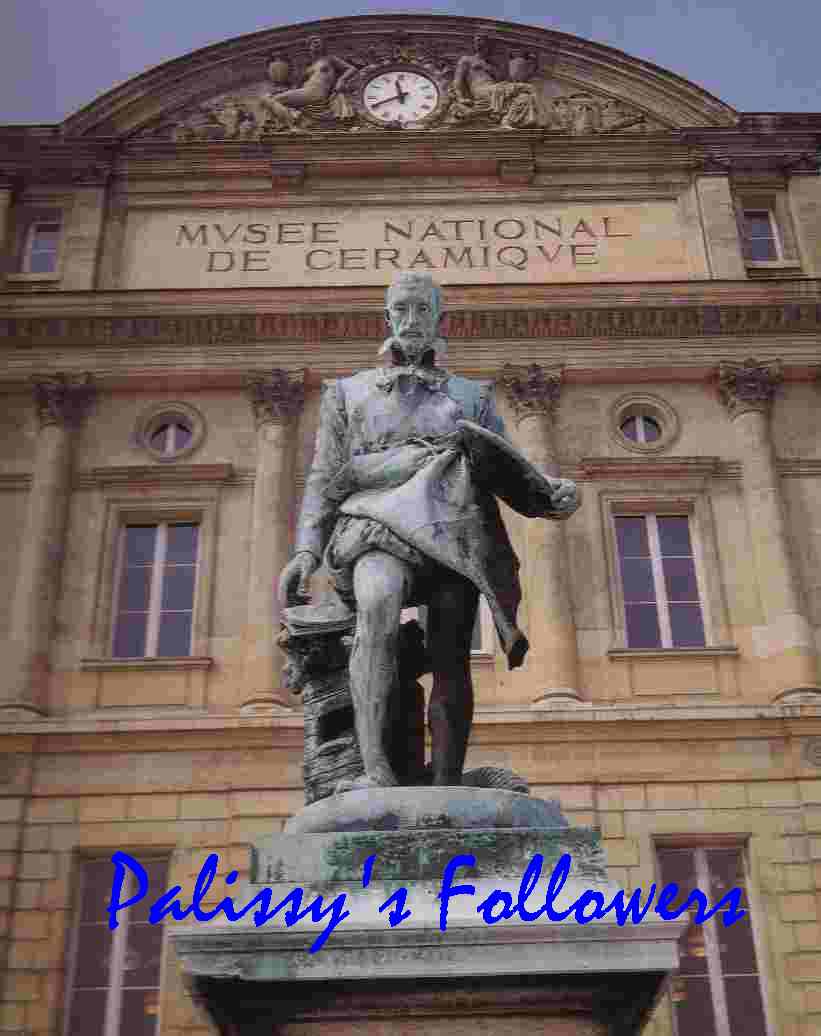 Bronze statue of Bernard Palissy
in courtyard
of the National Ceramics Museum
in Sèvres (France)
Bronze statue of Bernard Palissy
in courtyard
of the National Ceramics Museum
in Sèvres (France)
To any serious student of ceramics, the name Bernard
Palissy conjures vision of realistically colored fish, coiled vipers, and
slinking lizards in naturalistic settings. This sixteenth-century Renaissance
man of France enjoyed both the patronage and protection of the royal family,
particularly the queen mother, Catherine de Medici.
The Palissy revival period (1843-1900) would not
only engage many skilled artists and ceramic factories in France, but would
spread to other countries as well, including England and Portugal. In France,
during the 19th century, two important schools were created, in Tourraine
and in Paris.
Many of this artist's works appear in the collections
of the world's great museums, including the Louvre and the Decorative Arts
Museum in Paris, the National Ceramics Museum in Sèvres, and the
Victoria and Albert Museum and the British Museum in London. The largest
collection of these ceramists' works is at the Museum of Fine Arts in Tours,
France, which contains nearly 160 pieces, of which about forty are on permanent
display.
Click on each photo in the list to see it at the
screen size :
Barbizet ? circa 1865
Dimensions 7 ½ x 5 ¼ inches
Earthen fired to the biscuit stage before the
decoration with glazes is applied.
See photo page 133 attributed to Georges Pull
in Palissy Ware (Katz and Lehr). |
P01 |
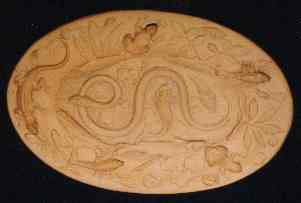 |
Vase signed by Thomas-Victor Sergent with two
large blue letters T.S.
H : 7 ¼ inches
Circa 1880 |
P02 |
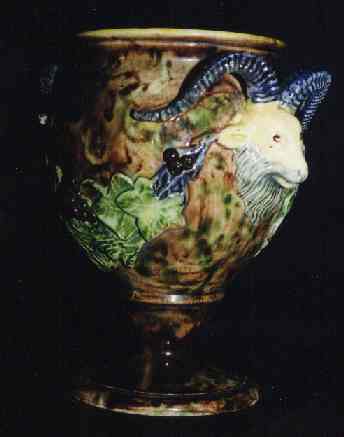 |
Commemorative plate attributed to Alexandre Landais,
circa 1890,
representing the "Château de Chenonceaux"
See in PALISSY WARE (Katz-Lehr) photos 93 page
93
Dimensions 12x9 inches |
P03 |
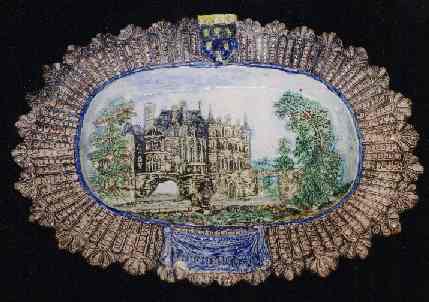 |
Flower pot-case with two large gargoyle heads
decorated with flowers and plants by Thomas-Victor Sergent signed by two
large blue letters T.S.
H : 7 ¼ inches
circa 1880 |
P04 |
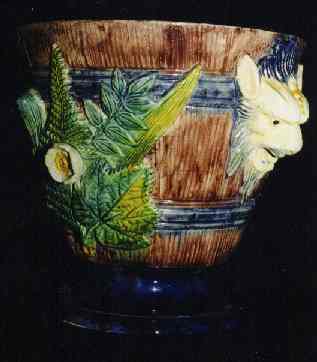 |
Jardinière, atributed to Thomas Victor
Sergent. Unsigned.
circa 1870
Dimensions : 6 ¾ x 6 ¼ inches
H : 5 inches |
P06 |
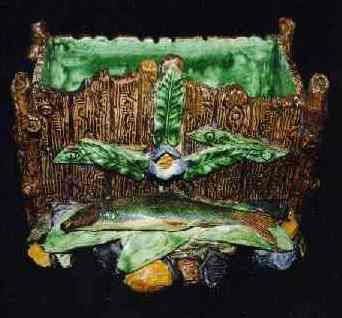 |
Vase by Thomas Sergent with white grapes and
two very important ramsheads.
H : 7 ¼ inches
Circa 1880 |
P07 |
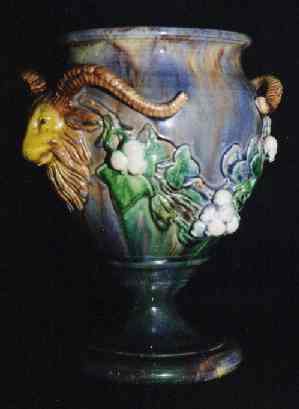 |
Signed, incized and dated "Boch 1892"
Dimensions 12x9 inches
The Boch works are extremely rare. . |
P08 |
 |
Signed Joseph Landais (1800-1883)
Monogram JL incised
Dimension : 7 ¼ x 4 ¾ inches
circa 1860 |
P09 |
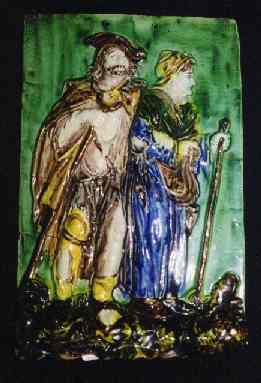 |
Large leaf in very thin earthenware ornated by
a water snake, snails and butterfly.
Dimensions : 14 ½ x 16 ¼ inches
Very probably from Limoges
circa 1900 |
P10 |
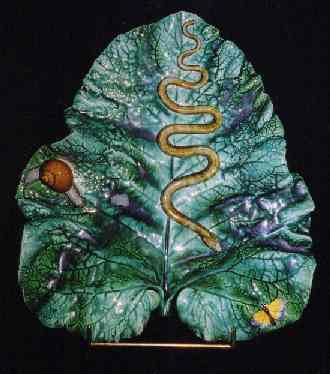 |
Vase by Thomas Sergent
H : 11 inches
With cherubs, young fauns, and two gargoyles
heads.
circa 1880-1890.
The pinnacle of Neogothic art !
Signature : two large latters T.S. , in blue. |
P11 |
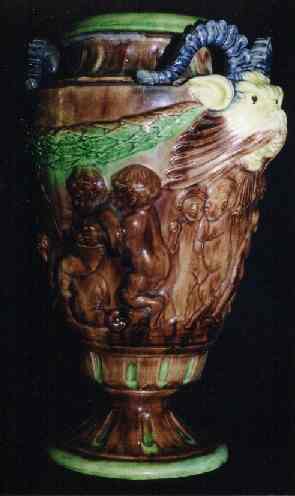 |
Vase by Thomas Victor Sergent
H : 7 ¾ inches
circa 1880
Signed with two large blue letters T.S. Ornated
by two important frogs and oakleafs. |
P14 |
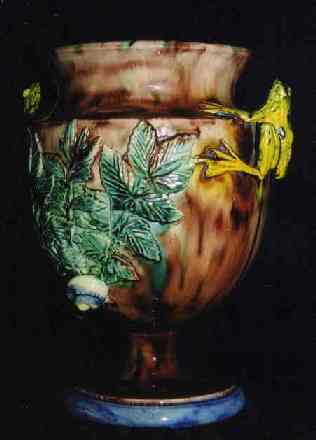 |
Platter, Alfred Renoleau, signed AR on the back.
Diameter 11 ¾ inches
circa 1890
Compare page 177 photo 237 in Palissy Ware by
Katz and Lehr. |
P15 |
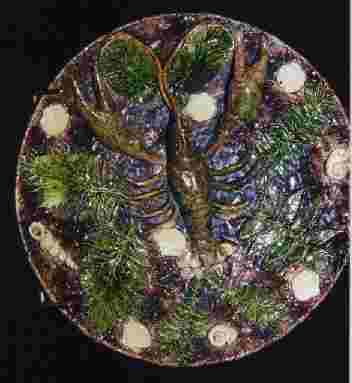 |
Medicis vase by Thomas-Victor Sergent signed
with two large blue letters T.S.
H : 14 inches
circa 1885
The base is a laurel crown, with four ramshead
in a very strong relief. On a marbled bottom, the four seasons are appliqued.
In "Bernard Palissy" by Leonard M. Amigo,
two paragraphs are devoted to this remarkable work (pages 215 and 216 –
photo nr. 200). |
P18 |
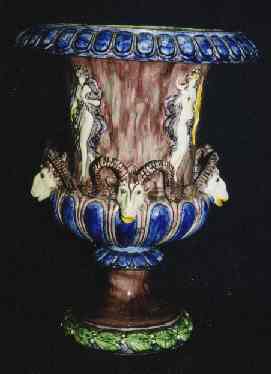 |
| Addition June 5th, 2000
Cobalt blue majolica jug
Signed by François-Maurice
Paris, circa 1875
H : 13 inches |
P19 |
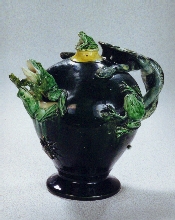 |
Click
here to return to the home page
|
Click on the following links to get to a
complete list of photos
concerning the subject :
|

